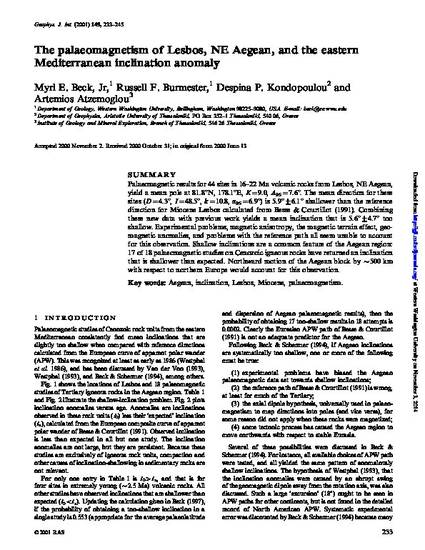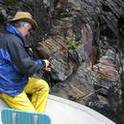
- Aegean,
- Inclination,
- Lesbos,
- Miocene,
- Palaeomagnetism.
Palaeomagnetic results for 44 sites in 16-22 Ma volcanic rocks from Lesbos, NE Aegean, yield a mean pole at 81.8ºN, 178.1º E, K = 9.0, A95 = 7.6º. The mean direction for these sites (D =4.3º, I = 48.5º, k = 10.8, α 95 = 6.9º) is 5.9º +/- 6.1º shallower than the reference direction for Miocene Lesbos calculated from Besse & Courtillot (1991). Combining these new data with previous work yields a mean inclination that is 5.6º +/- 4.7º too shallow. Experimental problems, magnetic anisotropy, the magnetic terrain effect, geomagnetic anomalies, and problems with the reference path all seem unable to account for this observation. Shallow inclinations are a common feature of the Aegean region: 17 of 18 palaeomagnetic studies on Cenozoic igneous rocks have returned an inclination that is shallower than expected. Northward motion of the Aegean block by ~500 km with respect to northern Europe would account for this observation.
Available at: http://works.bepress.com/russ_burmester/11/
